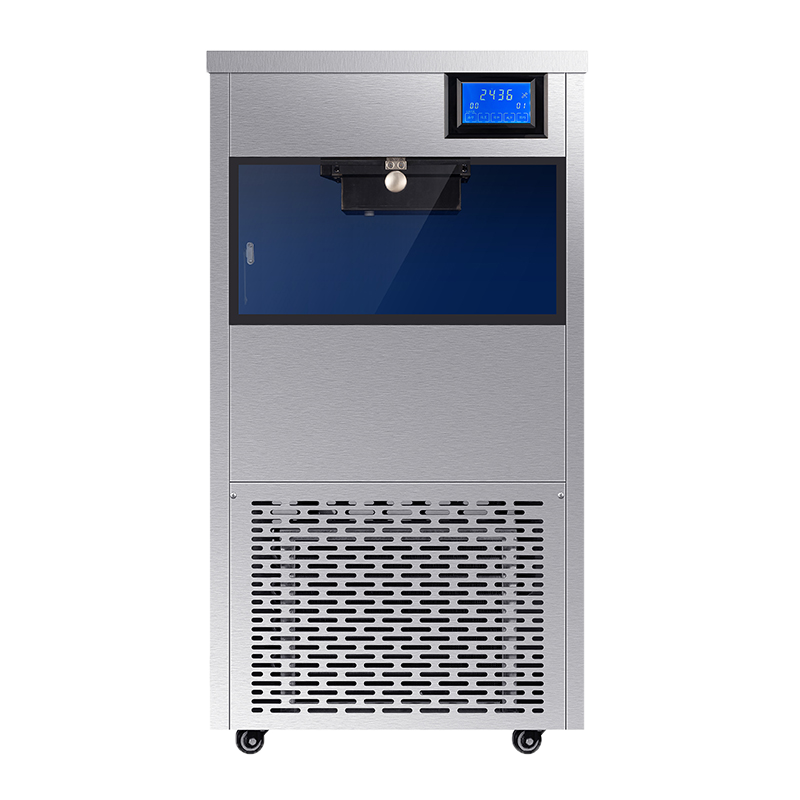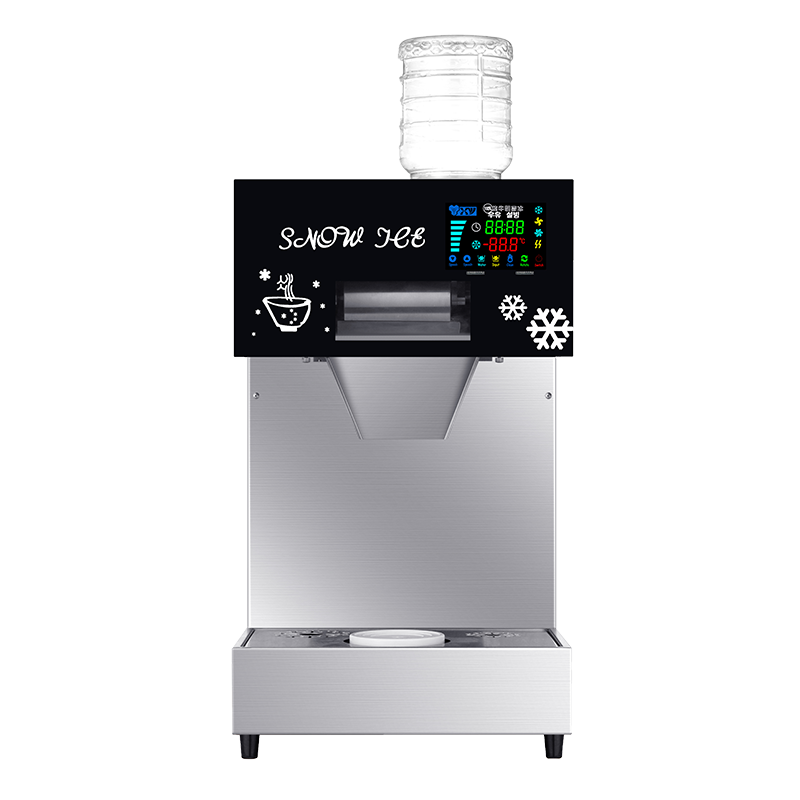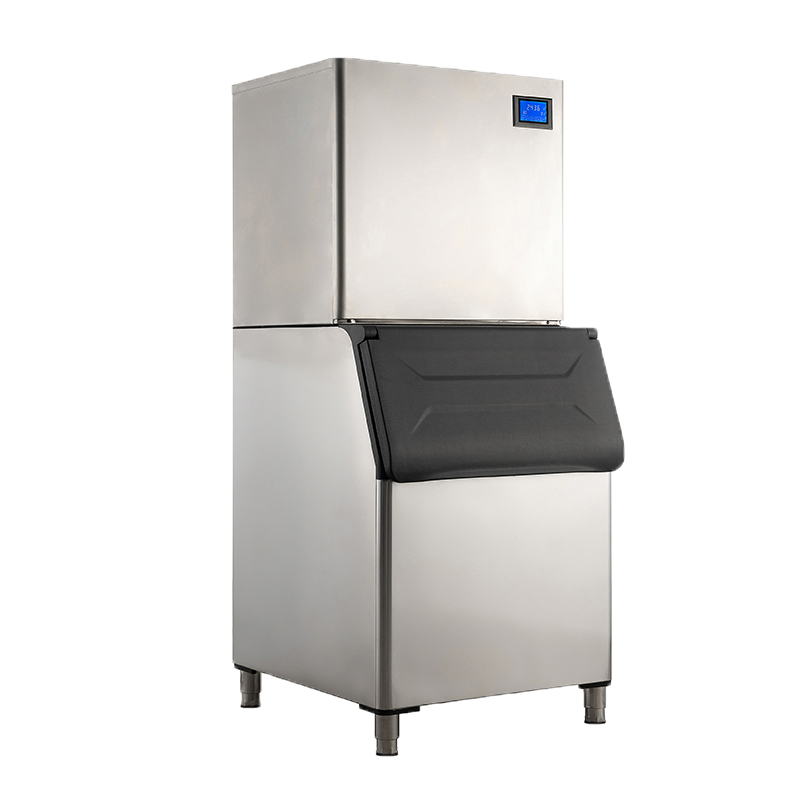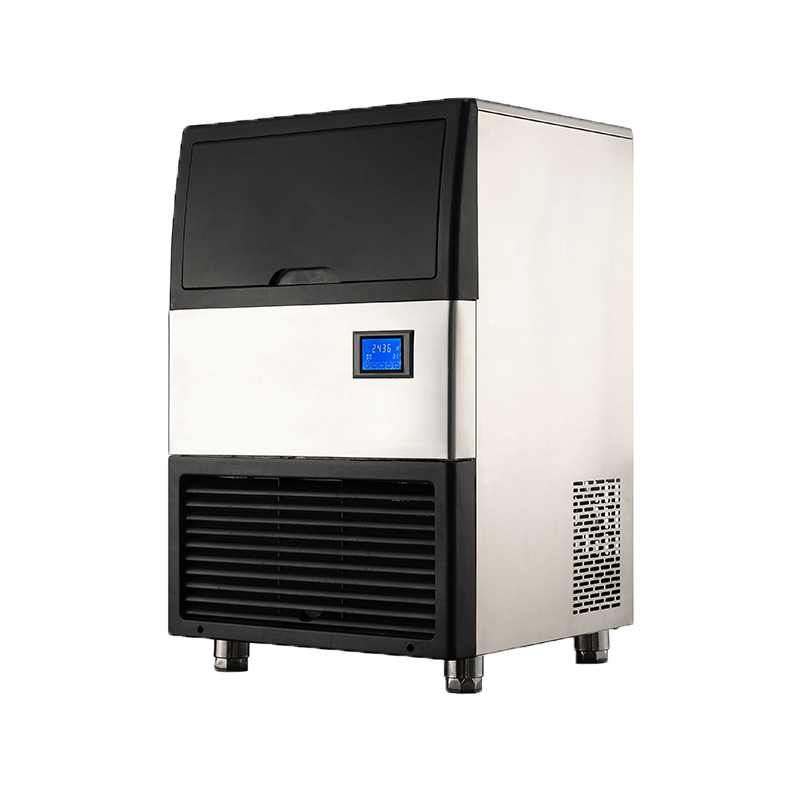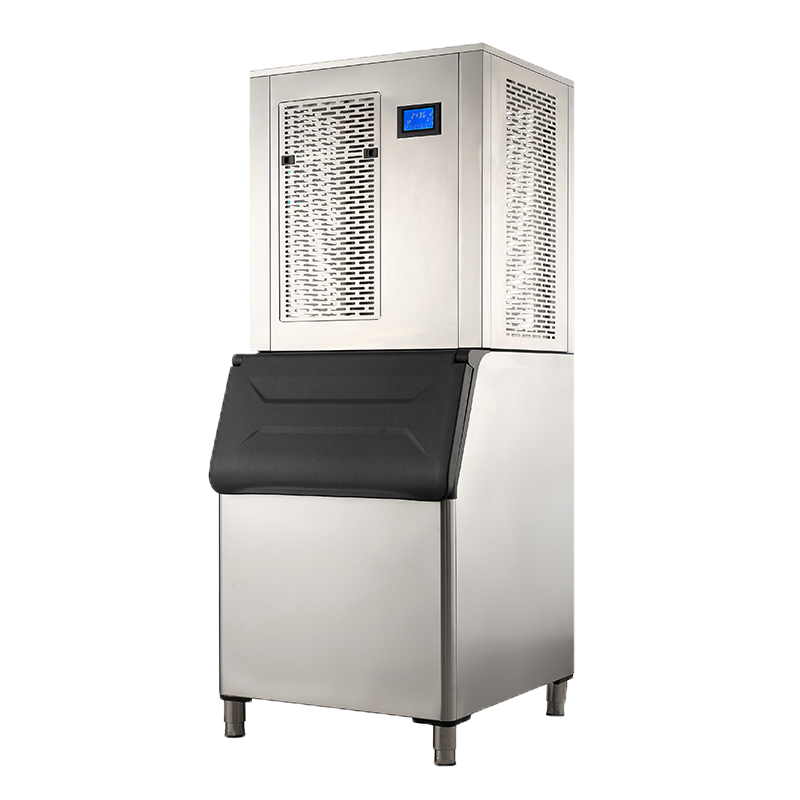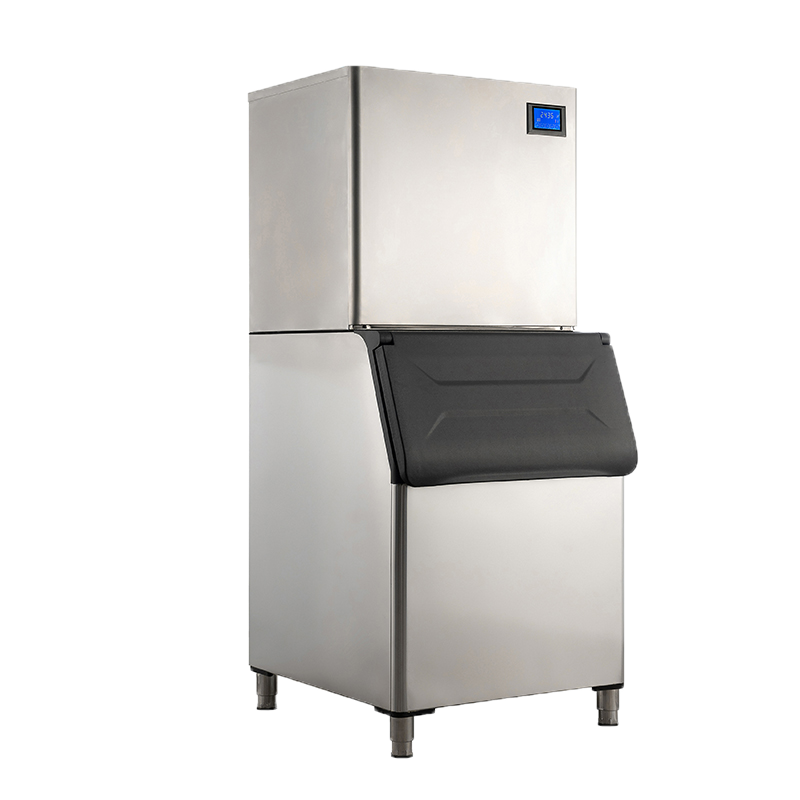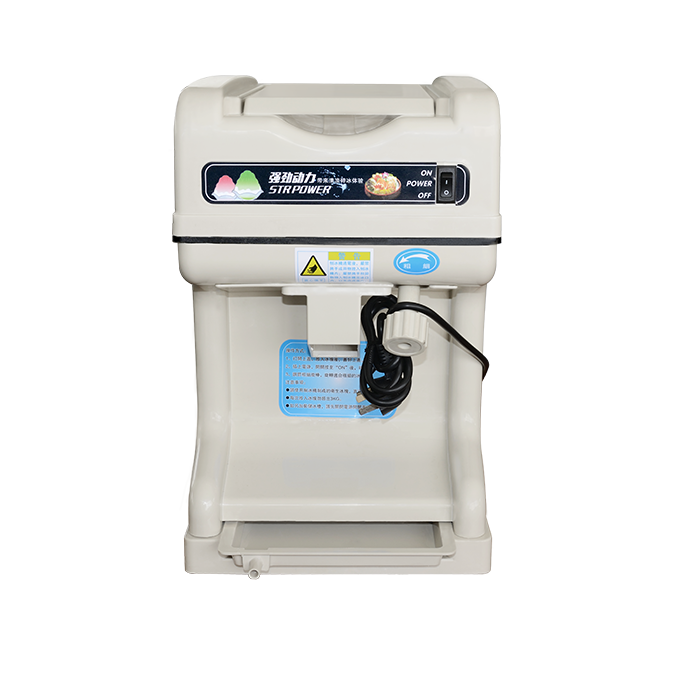Ice Shape: Flake ice machines produce ice in the form of small, flat flakes. These flakes have a larger surface area compared to cube ice, allowing for faster cooling and better preservation of products.
Cooling Speed: Flake ice machines have a rapid cooling process. The ice is formed by spraying water onto a cooled surface, which freezes into flakes almost instantly. This quick cooling is beneficial for industries such as seafood, where rapid chilling is required.
Versatility: Flake ice is often used in applications where ice needs to be molded or shaped, such as in seafood displays, salad bars, and medical applications. It is also commonly used for blending and mixing purposes in drinks and cocktails.
Ice Shape: Cube ice machines produce ice in the form of solid, clear cubes. These cubes are more compact and have a slower melting rate compared to flake ice.
Aesthetics: Cube ice is often preferred for its visual appeal. It is commonly used in bars, restaurants, and hotels for serving beverages, as it enhances the presentation and appearance of drinks.
Cooling Duration: Cube ice has a longer cooling duration compared to flake ice. It melts slower, which means it can keep drinks colder for a longer period without diluting them.
Storage and Handling: Cube ice is easier to handle and store due to its solid and uniform shape. It can be easily scooped, bagged, or dispensed using ice machines or ice bins.
In summary, the main differences between flake ice machines and cube ice machines lie in the shape of the ice produced, the cooling speed, versatility, aesthetics, and storage/handling characteristics. The choice between the two depends on the specific application and requirements of the user.


